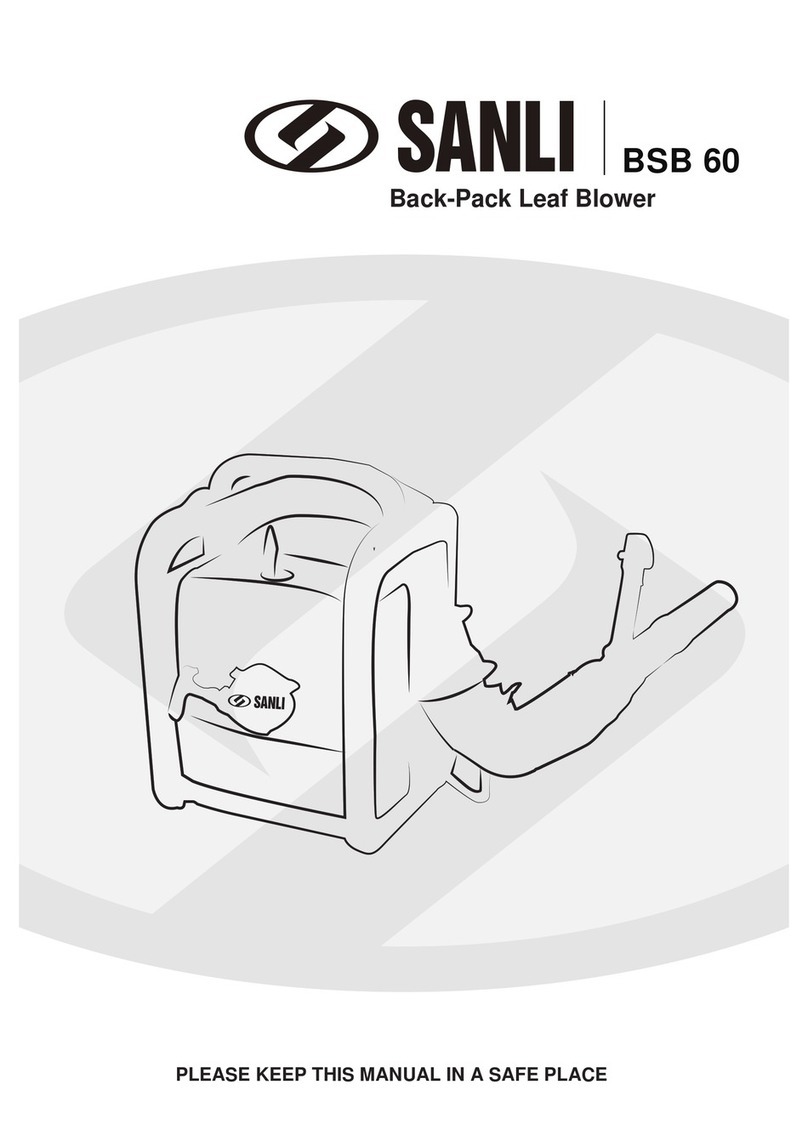2
Technology improvements
Our management principle is to improve the quality continually. As a
result, our technology is improved from time to time. If the operating
characteristics or the appearance of your machine differ from those
described in this manual, please contact your dealer for assistance.
Therefore, we cannot be responsible for changes, modifications or
improvements that are not covered in this manual.
Safety precautions
Special safety precautions must be observed when working
with the power tool.
It’s important that you read, fully understand and observe the
following safety precautions and warnings.
-Careless or improper use of any blower may cause serious or fatal
injury.
-Your dealer has shown you how to operate your blower. Observe all
applicable local safety regulations, standards and ordinances.
-Minors should never be allowed to use a blower.
-Bystanders, especially children, and animals should not be allowed in
the area where a blower is in use.
-The operator has the responsibility to avoid injury to the third party
and damage to their property.
-Don’t lend or rent your blower without the owner’s manual. Be sure
that anyone using your blower understands the instructions contained
in this manual.
You must be fit to work with a blower.
·Rested, health and in good physical and mental condition
·If you get tired, take a break in good time
·Do not operate the blower if you are under the influence of any
substance(drugs, alcohol, etc.)which might impair vision, dexterity
or judgment.
-Only accessories supplied are approved for use with your specific






























